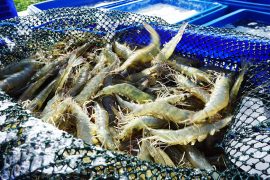
White ants have dual roles as builders and decomposers
When the term “white ants” comes up, images of destroyed houses, damaged wood, and pest control might be the first things that pop into your mind.
Many associate these creatures with the necessity of spending money on costly repairs. However, there’s much more to these tiny critters than meets the eye.
The mystery of white ants
Ironically, despite the name “white ant,” these creatures are not ants at all. They’re actually specialized, social cockroaches known as termites.
Living in extensive colonies that can house well over a million individuals, these insects have incredibly complex social lives and construct amazingly elaborate habitats.
Mathematical equations have even been developed by researchers to understand their complicated behaviors, such as how they dig and forage.
Termites’ abilities to build intricate nests are so astounding that they’ve been hailed as “one of the architectural wonders of the living world.”
These can be found everywhere, from trees and soil to power poles and towering mounds two meters high. Some of these awe-inspiring constructs are believed to be over 30,000 years old and still inhabited today.
The role of white ants in nature
Among the approximately 300 Australian species of white ants, only a few are recognized as pests. In tropical forests, they are major invertebrate decomposers.
White ants are pivotal organisms that work closely with other microorganisms to cycle nutrients back into the environment. By doing so, they support the survival of both plants and animals.
Diversity of white ants
With more than 2,000 termite species worldwide and multiple feeding/nesting groups, white ants’ appearances vary dramatically.
Even within the same species, depending on their roles as king, queen, worker, soldier, or alate, they can look strikingly different. White ants usually have soft, pale-colored bodies with straight antennae and broad waist.
Not all white ants can fly. Only the sexually mature termites, known as alates, are capable of flight. Their mission is to fly out of the nest to establish a new one where they’ll become the reigning kings or queens.
This occurrence, referred to as “social swarming,” typically happens on warm and humid spring or summer evenings. After the swarm, the alates lose their wings and start burrowing to become the newly appointed termite royalty.
Warning signs of termite invasion
The presence of alates around a home or property is a clear signal that a mature nest is close and expanding. It’s even advised to have annual termite inspections by a registered pest control company.
Visible wood and structural damage, hollow-sounding wood, and termite droppings can indicate an invasion.
White ants might also construct small mud tunnels and patches on both interior and exterior house walls for protection and airflow mitigation.
Effective termite control
The methods to control termites differ based on the type of termite present. Determining the kind of termite, locating their nests, and selecting the appropriate eradication method is a complex process.
It’s recommended to consult with a registered pest control company, and not just solely rely on preventive measures like using termite-resistant wood or adding chemical and physical barriers in the soil around buildings.
White ants, despite their notoriety as pests, play an essential role in the natural world. Their vital ecosystem services underscore their significance, yet their potential for destruction necessitates vigilant management and control.
Fully understanding the nature of termites is crucial to both preserving natural ecosystems and protecting human infrastructure and investments.
Fascinating facts about white ants
While white ants may often be viewed through the lens of destruction, they possess some truly fascinating traits that are worth exploring.
For instance, termites have been around for over 250 million years, making them one of the oldest social insects on the planet. Their resilience and adaptability have allowed them to thrive in diverse environments, from rainforests to arid deserts.
One interesting aspect of termite behavior is their communication methods. Termites use pheromones, vibrations, and even touch to convey messages within the colony. This complex system enables them to coordinate tasks such as foraging, nest building, and defense against threats.
Additionally, some species of termites are known to exhibit a unique form of mutualism with certain fungi. They cultivate these fungi in specialized chambers within their nests, providing a sustainable food source for the colony. This relationship not only benefits the termites but also contributes to nutrient cycling within their environment.
Understanding these fascinating characteristics can shift our perspective on white ants from mere pests to remarkable organisms that contribute significantly to the balance of nature. By appreciating their role in ecosystems, we can better navigate the challenges they present in our homes and communities.
—–
Like what you read? Subscribe to our newsletter for engaging articles, exclusive content, and the latest updates.
Check us out on EarthSnap, a free app brought to you by Eric Ralls and Earth.com.
—–













